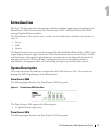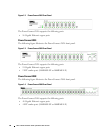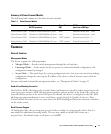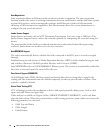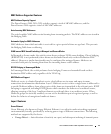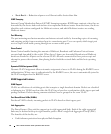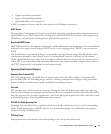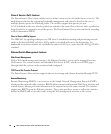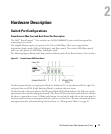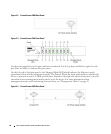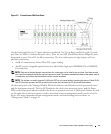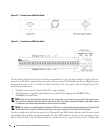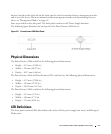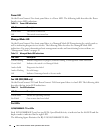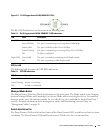
16 Dell PowerConnect 28xx Systems User Guide
Class of Service (CoS) Features
The PowerConnect 28xx system enables users to define various services for traffic classes of service. The
underlying mechanism for supporting bandwidth management and control is based on the use of
multiple priority queues for classifying traffic. The switches support four queues per port.
A CoS is defined by the user, whereby packets are related to the same Class of Service. After a packet has
been classified, it is assigned to one of the queues. The PowerConnect 28xx system can classify according
to IPv4 information (DSCP).
Class of Service 802.1p Support
The IEEE 802.1p signaling technique is an OSI Layer 2 standard for marking and prioritizing network
traffic at the data link/MAC sub-layer. 802.1p traffic is classified and sent to the destination. No
bandwidth reservations or limits are established or enforced. 802.1p is a spin-off of the 802.1Q (VLANs)
standard.
Ethernet Switch Management Features
Web-Based Management
With a Web-based management interface, the Ethernet Switches’ system can be managed from any
Web browser. The system contains an Embedded Web Server (EWS), which serves HTML pages,
through which the system can be monitored and configured.
TFTP Trivial File Transfer Protocol
The PowerConnect 28xx switches support software boot image and software download through TFTP.
Remote Monitoring
Remote Monitoring
(RMON) is an extension to the Simple Network Management Protocol (SNMP),
which provides network traffic statistics. RMON defines current and historical MAC-layer statistics and
control objects, allowing real-time information to be captured across the entire network. The switches
support one RMON group for Ethernet statistics. The system provides a means to collect the statistics
defined in RMON and to view the results, using the Web management interface in the system.




